Regular training and education are prerequisites for every clinical career. Training and educating health care professionals ensures individual understanding and a team approach with shared knowledge, skills, and attitudes toward disease prevention and management.
Nurse practitioners (NP) and physician assistants (PA) are vital members of clinical care teams. They provide exceptional patient care and support at a substantially lower cost to the organization than physicians.
As the demand for health services grows, combined with the physician shortage, hospitals and health systems will need to rely on this essential group of practitioners more and more in the future.
Fortunately, the NP and PA professions are growing at a fast pace. According to the latest figures, there are more than 467,000 NPs and PAs in the U.S. alone. The Bureau of Labor Statistics projects that the number of employed physician assistants will grow 28 percent by 2031, much faster than the average for all occupations.
Because they are so crucial to the hospital’s and patients’ well-being, hospital leaders should prioritize learning opportunities to improve NP and PAs’ skills and clinical performance and increase satisfaction and retention rates.
Considering this need, here are four ways to implement a successful NP and PA education program.
Advanced Scope of Practice Understanding
NP and PA scope of practice is different in every state, with some additional qualifications in their hospital practice location. NPs practice in nearly every health care setting, from clinics and hospitals to private practice, nursing homes, and schools. PAs practice in all areas of medicine as well, including primary care, emergency medicine, hospital medicine, critical care, general surgery, and psychiatry, to name a few disciplines.
It is essential to quality that NPs & PAs have a comprehensive understanding of their own scope of practice requirements in the specific area of medicine they practice in. For our patients, quality remains the #1 priority. Hospital leadership can help by providing information on facility by-laws and state regulations.
Also, physicians are sometimes unsure how to utilize the NPs and PA they collaborate with. In some cases, it may be necessary to further educate physicians on NP and PA scope of practice to ensure correct utilization and a more collaborative relationship.
In-Depth Specialty Education
Specializing helps expand NP and PA clinical knowledge in a specific area. To advance their understanding, hospitals should offer a rich repository of lectures on specialty topics, particularly emergency medicine, hospital medicine, and critical care medicine.
Nurse Practitioner Specialties
According to the Nursing Licensure Map, NPs can pursue 13 different specialties, including acute care, adult gerontology, cardiac care, family practice, and pediatrics.
Physician Assistant Specialties
PAs can consider Certificates of Added Qualifications (CAQ), a voluntary credential that Certified PAs could earn in various specialties, such as emergency medicine, hospital medicine, cardiovascular and thoracic surgery, pediatrics, psychiatry, and more.
Earning a CAQ demonstrates that, in addition to meeting the demanding standards for becoming a physician assistant, a PA has gained specialized expertise and gone above and beyond educationally to better serve patients in specific health care settings.
Procedural Education
NPs and PAs need to learn concrete, relevant procedural skills to practice confidently and succeed in their careers.
Hospital leaders should undertake proactive measures to identify areas where NPs and PAs need refreshers on procedural skills based on the system, facility, and individual performance metrics.
Include hands-on training with simulation and live models to achieve the best results. Topics may include central line insertions, airway management, arterial line insertion, lumbar puncture and tap, thoracentesis, arthrocentesis, and more.
Because most states require NPs and PAs to complete some form of continuing education every few years as a condition of licensure, hospitals could also consider paying for these clinicians to attend conferences and training sessions to fulfill CE and CEU requirements.
New Clinician Support
Hospitals and health care facilities should invest in programs to support recent NP and PA graduates. That includes offering access to continuing education, building a culture of continuous learning that encourages asking questions, and supplying seasoned NPs and PAs as mentors.
In addition, scaffold productivity expectations during onboarding for a smoother transition into the workflow and set performance measures in place with regular reviews.
Conclusion
It’s necessary to tailor education to meet the needs of all clinicians, NPs and PAs included. The goal should always be to help this indispensable group of clinicians perform at their best and practice to the top of their scope. The investment will pay off in cost savings, filled physician gaps, and exceptional patient care.
Accelerate Your Clinical Career
Are you a nurse practitioner or a physician assistant who wants to practice at the top of your license in a team-oriented, collaborative clinical environment with open communication and full physician support? We have many opportunities available.





